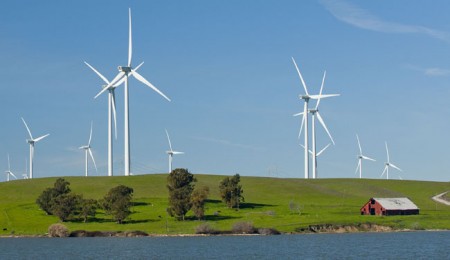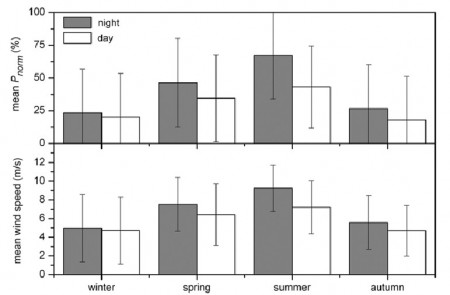Jan
18
Sensing the Wind Is Getting Better Results
January 18, 2012 | 1 Comment
Wind speed primarily determines the power generated by a wind turbine. On a wind farm in which the turbines experience the same wind speeds but different “shapes”, most easily seen as turbulence affecting the wind profile, the turbines will produce different amounts of power.
Lawrence Livermore National Laboratory scientist Sonia Wharton and colleague Julie Lundquist of the University of Colorado at Boulder and the National Renewable Energy Laboratory are looking at that issue calling it “stability”. Their paper appeared in the Jan. 12 edition of the journal Environmental Research Letters, where Wharton and Lundquist examined turbine-generated power data, segregated out the atmospheric stability, to determine the power performance at a West Coast wind farm.
The pair has found by looking at the stability of the atmosphere, wind farm operators could gain greater insight into the amount of power generated at any given time. The result is surprising; while it seems obvious that power generated at a set wind speed is higher under stable conditions and lower under strongly unsteady conditions, the average wind power output difference is as high as 15% less wind power generation when the atmosphere is unstable.
Wharton said, “The dependence of power on stability is clear, regardless of whether time periods are segregated by three-dimensional turbulence, turbulence intensity or wind shear.”
The pair rolled in time to the research, while turbulence is a relatively well-known term in assessing turbine efficiency, wind shear – which is a difference in wind speed and direction over a relatively short distance in the atmosphere also plays an important role when assessing how much power a turbine generates over certain time scales.
The study offers up a challenge to improve performance. Wharton and Lundquist show that wind farm operators could better estimate how much power is generated if the wind forecasts included atmospheric stability impact measurements.
The research follows on earlier research that looked at atmospheric stability effects on power output. But few studies have analyzed power output from modern turbines with hub heights of more than 60 meters, a small unit by today’s standards.
For the new research, Wharton and Lundquist gathered a year of power data from upwind modern turbines (80 meters high) at a multi-megawatt wind farm on the West Coast. They considered turbine power information as well as meteorological data from an 80-meter tall tower and a Sonic Detection and Ranging (SODAR), which provided wind profiles up to 200 meters above the surface, to look at turbulence and wind shear. Looking at upwind turbines removed any influence that turbine wakes may have on power performance.
They also found that wind speed and power production varied by season as well as from night to day. Wind speeds were higher at night (more power) than during the day (less power) and higher during the warm season (more power) than in the cool season (less power). For example, average power production was 43 percent of maximum generation capacity on summer days and peaked at 67 percent on summer nights.
The research at the West Coast location also offered new operational data. Wharton said, “We found that wind turbines experienced stable, near-neutral and unstable conditions during the spring and summer. But daytime hours were almost always unstable or neutral while nights were strongly stable.”
Lundquist winds up the press release saying, “This work highlights the benefit of observing complete profiles of wind speed and turbulence across the turbine rotor disk, often available only with remote sensing technology like SODAR or LIDAR (Laser Detection and Ranging,). Wind energy resource assessment and power forecasting would profit from this increased accuracy.”
The ladies have made an important point. While wind might seem free, leaving 15% of the efficiency out of the performance is a major opportunity for production and profit. Without a fuel cost the operation expenses and amortization cost can always use reductions and speeding up. Income per operating hour would be an operator’s watchword so adding 15% to income by increasing output could add market share and a chance to drop rates to consumers.
Thanks to Wharton and Lundquist for a more, better and cheaper potential from wind power.
Comments
1 Comment so far




My prediction is that Wind Power will turn out to be a dead end technology (although it will hang on because it is heavily subsidized and politically favored.
It is not really a base load technology. Would you send your Mother to a hospital whose only source of power was a windmill?
It requires 5 times the steel and concrete per Megawat as a nuclear reactor does.
Windmills are built far from urban centers and much of the power is lost in transmission.
It kills birds and disrupts micro-climates.
It is expensive as hell.